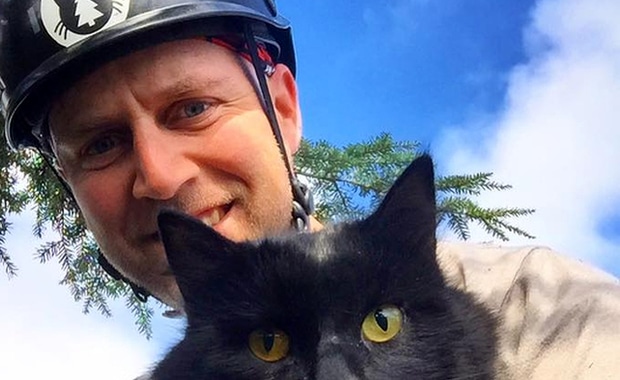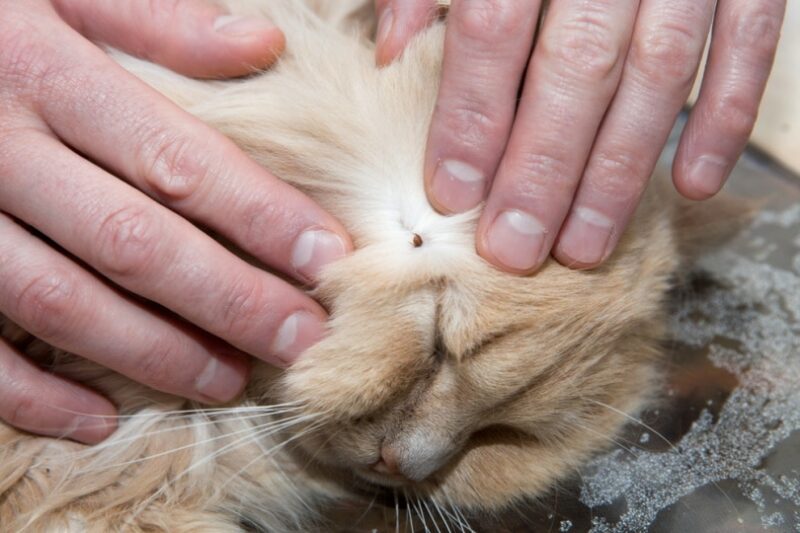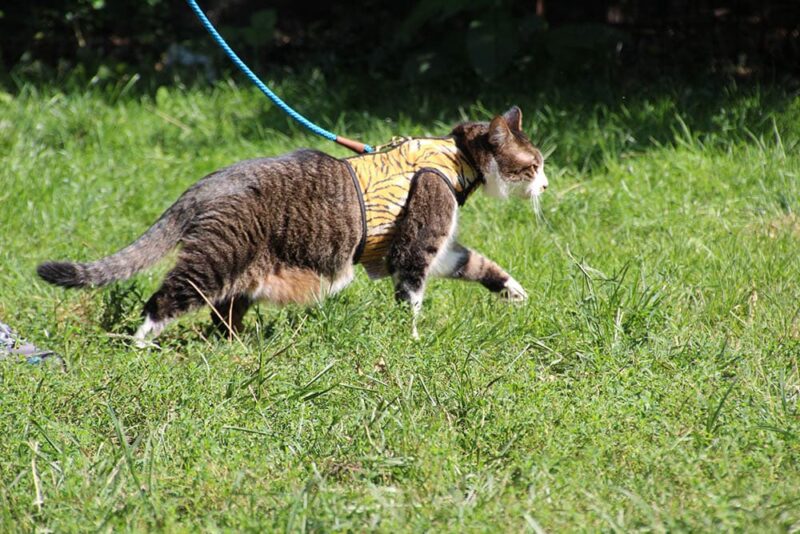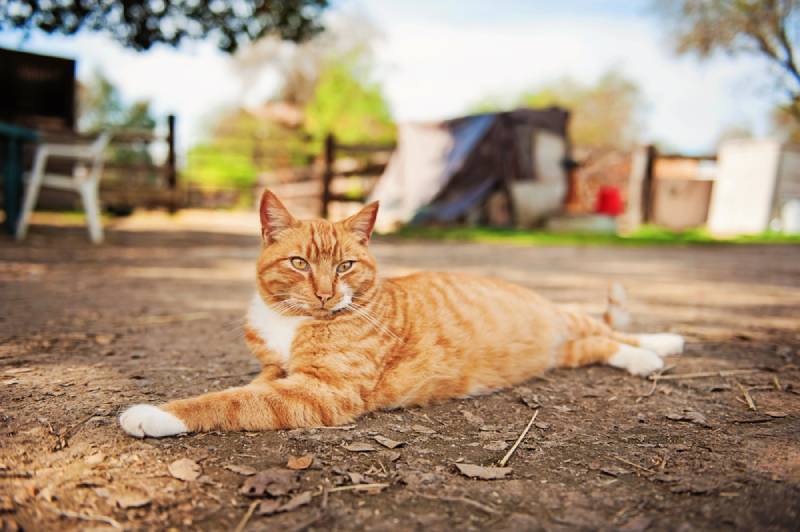
“This is a beloved member of the family,” says Otto, referring to Canopy Cat Rescue’s no-questions-asked, no-judgment rescue policy. If you have a cat up a tree in most areas in Washington, one of the men will respond. And, he tells me, the two men’s growing profile means they get calls from across the country, running a sort of cat advice hotline as they reassure worried cat guardians and calm nerves.
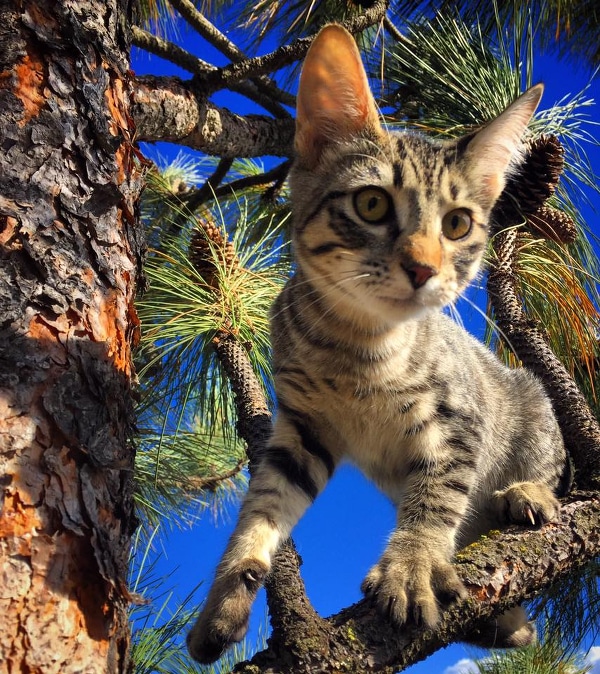
When I talked with Sears about Canopy Cat Rescue’s donation-run group (the two men never charge for calls, on the grounds that “every cat deserves to be rescued”), Otto was out working on a rescue. (The cat was fine, although he made a valiant attempt to take Otto’s eyes out on the way down.) A mountain climber, former forest ranger, and guide, Sears got interested in climbing trees when he started dating Otto’s sister, and it ultimately led him down the path of co-founding Canopy Conservation, a sustainable tree-management firm. Both men are animal lovers. Sears has two cats and two dogs, while Otto has one cat and two dogs. Before long, the two men started getting calls of a furry – and more pressing — nature from cat lovers desperate to get their lost kitties out of trees.
“A compassionate cat-in-tree rescuer has to be a cat owner,” Sears said, discussing the multiple cases they see each year.
Once, he drove two hours to Bellingham, Washington, for an older man on Social Security who was desperate for help — and it wasn’t even his cat. Sears was nervous about encountering a situation that’s not uncommon in cat rescue: not knowing the cat’s history. With a guardian around, either man can go up forewarned about whether cats are friendly, shy, skittish, or aggressive, and he can plan accordingly. A strange cat, though, can be unpredictable, this in addition to the stress of being caught in a tree for hours or days.

Fortunately, the Bellingham cat was friendly and affectionate, so Sears got her down without incident. But when he brought her to the organization’s truck to scan her, she didn’t have a microchip — a clear example of why both men are “huge advocates for microchipping.” They encourage cat guardians to make sure their cats are chipped in case of situations like these. Sears started walking down the road, still suited up with his helmet, when a car paused.
“That’s my cat!” the occupant shouted. “That’s Mama Kitty! She’s been missing for five days!”
Sears tells me that Canopy Cat Rescue has rescued hundreds of cats in Washington state since 2009. He further explained why arborists are a better choice than firefighters: Fire personnel prefer to focus on fighting fires, they aren’t trained to climb trees, and they are limited by the height of their ladders.
“Often,” he said, “they’ll extend the ladder and the cat will just climb higher.” Higher as in really, really high.
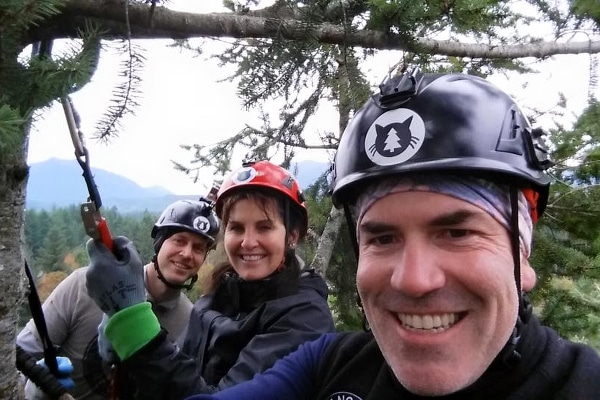
The men of Canopy Cat Rescue aren’t just rescuing cats, they’re raising awareness about why cats end up stuck, and what cat owners can do to prevent it. Lost, scared, and confused cats can dart up trees, but they can’t necessarily get down so easily. They may stay for days or even weeks in some cases, crying for help until someone gets them down. Climbing high trees can be unsafe for humans and cats alike, which is where trained personnel with the right gear and cat handling experience come in.
Contrary to popular belief, cats won’t just “come down when they’re hungry,” both men stressed, and this common advice comes from people who should know better, including vets. The men have seen cats reduced to “skin and bones” after as long as three weeks in trees, which is an incredible act of survival given that cats who don’t eat can develop hepatic lipodosis (fatty liver) within days. The condition is quickly fatal.
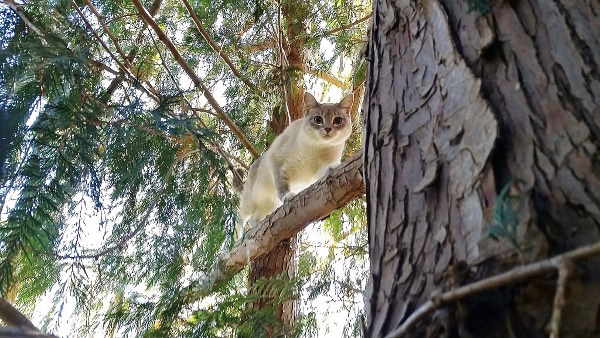
Instead, they say, if you have a cat stuck up a tree, encouraging it to consider moving downwards is the best move. Sears explains that calling for cats, scratching the trunk, and rattling a treat bag can all sometimes be an effective way to get a cat into reverse gear — thanks to the alignment of cat claws, cats need to climb down backwards, which can be disorienting. Sometimes these steps are all it takes for the pros to get a cat down. Don’t, they both say, leave food at the base of a tree. It will attract surrounding predators, frightening a scared cat even more. And who could blame a cat in that situation? Diving into a shark tank sounds like a terrible idea.
As for preventing unauthorized feline arboreal adventures, Otto says, the best advice is simple: Keep your cat indoors. For indoor-outdoor cats or chronic escapees, putting flashing around tree trunks can discourage climbing by making the surface too slippery. (Bonus: it also deters nibblers such as bunnies, squirrels, and deer.) It’s also important to keep indoor-outdoor cats inside for several weeks after moving, he says, as clients on a number of calls say they’re new to the neighborhood — it’s easy for cats to get spooked when they don’t know where they are and don’t recognize the terrain.
To learn more or donate visit Canopy Cat Rescue’s website and follow them on Facebook and Instagram.
Photos courtesy Canopy Cat Rescue.
Also see:
